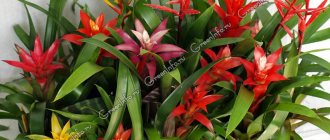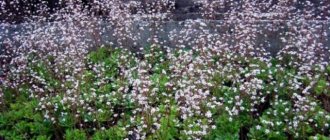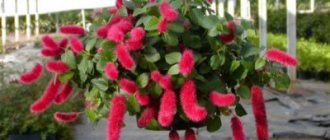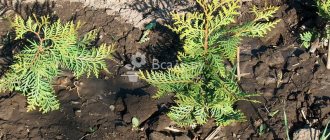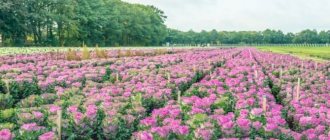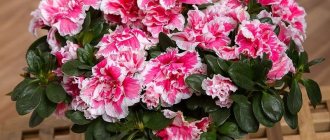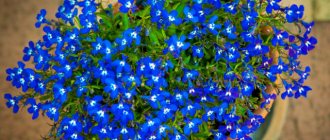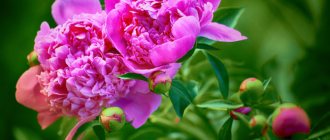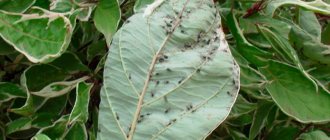Phalaenopsis with “open” roots: specifics of cultivation
When transferring phalaenopsis from an old substrate to keeping it in a plug or with a bare root system, the orchid has difficulty adapting - it loses leaf turgor, and its substrate roots may dry out.
Only the new leaves and roots that the phalaenopsis will grow will feel good and familiar.
Not all orchids of this species like to grow in glass vases without a substrate.
Here it is important to guess the desire of the flower so as not to dry out the plant. When growing on a block with open roots, moisten the roots every other day, or every day depending on air humidity
Of course, caring for them is problematic: frequent watering, the inability to leave for a while, but the roots of such orchids are healthy and they grow well
When growing on a block with bare roots, moisten the roots every other day, or every day, depending on air humidity. Of course, caring for it is problematic: frequent watering, the inability to leave for a while, but the roots of such orchids are healthy and grow well.
Review: Soil for orchids ZeoFlora - Feeding for home beauties - orchids.
Good day to everyone, dear readers! I like indoor plants, but I take care of them somehow spontaneously, so the only plants left are those with which there was mutual love and a desire to see each other further) One of these plants includes orchids. Now I have six of them and they are in dormant mode, that is, they do not bloom. Usually on New Year's Eve they begin to delight with their beauty.
To care for them, for several years I purchased fertilizers and certain types of soil that suited me, but I decided to try something new for myself - a new moisture-retaining soil. What motivated me was that, having once left for two weeks, upon arrival, two dead flowers were waiting for me (those on whom I left them did not water them and from the heat of the radiators they dried out - it was not possible to restore them), so the peculiarity of the soil is that it retains moisture for me was important.
The soil is in the form of medium-sized balls, reminiscent of those that are placed on the bottom of flower pots (expanded clay). According to the manufacturer, the soil saturates the plant with microelements and retains moisture.
I admit that at first I was afraid to plant my pets in “stones”, somehow it didn’t fit that they would get everything they needed from the stones, so I planted two orchids, filling them halfway, and only added a little to one. On the packaging there is information that you need to add from 20 to 90 percent of the total soil mass.
The packaging looks standard – it’s a bag with the contents – stones.
When watering, this soil makes hissing sounds) Immediately after replanting, I noticed that one orchid’s existing green sprouts began to dry out. Of course, this upset me, but I did not return them to their previous soil. As a result, the old roots dried out and new ones began to appear - dark green and juicy. On another plant a bud emerged, a future flower.
I’ll add that during this period I also spray the top of the leaf with liquid fertilizer once every two weeks. I won’t say that this soil is somehow better than the previous one (you can read a review about it here), in theory, the usual one with liquid fertilizer was enough for me. Although with “Zeo flora” and plus liquid fertilizer I noticed faster growth and new dark roots, I had never seen anything like this before. As for moisture retention, I can’t say that it is obvious: I placed the pots in a bowl of water to soak them in moisture for 20-30 minutes , but the additive still dried out quite quickly, although now is the heating period and it’s warm on the windowsill where the flowers are. Maybe in the summer season the moisture will linger longer.
It is in vain that the manufacturer called it “soil”, because in essence it is just a fertilizer or soil improver, and not an independent soil. For those who want fast growth and flowering, “Zeo flora” will definitely come in handy. The cost of the package is about 260 rubles.
Pros and cons of the finished substrate
What is good about purchased substrate:
- Convenient packaging - measured in liters, suitable for calculating how many orchids need to be replanted.
- There are ready-made mixtures that do not require additional moss or drainage.
- There are soils that are additionally enriched with minerals. This makes it possible not to feed the plants additionally.
- Manufacturers produce different formulations: complex and monocomponent, depending on the type of epiphyte and the individual preferences of its owner.
Among the disadvantages are the average quality of some brands, where production allows:
- uneven fraction of bark and expanded clay;
- inclusions of debris or debris;
- parasite infection.
There are packagings where it is impossible for the buyer to examine the condition of the product, and when opened, mold, mustiness and other imperfections are revealed.
Top best soils
The most affordable soils can be considered (from 59 rubles per 1 liter):
- Geolia;
- "Black Gold";
- "Flower Happiness";
- "Fasco";
- "Ambulance".
“Living World” also has an affordable price, but is not found in all cities of Russia. The same can be said about the Black Gold soil. In terms of composition, Seramis is most praised (from 571 rubles for 5 liters), although its mixture contains a lot of fine fractions. Kekkila “Ceoflora” and Geolia have proven themselves well on the flower growers’ forums.
The most negative reviews are found among users of the “Ambulance” soil, where both mealybugs and fungus gnats were found in some of the packs.
How to determine the quality of purchased soil
Most often, defects are not production defects, but as a result of improper storage or incorrect delivery.
Pay attention to the following points:
- The name should indicate whether the substrate is universal or intended only for epiphytic orchids. It’s good if you can purchase a substrate specifically for phalaenopsis.
- Carefully read the composition of the components. This can be verniculite, expanded clay, bark, swamp moss, chips or coconut fiber, but earthen soil is excluded.
- If the packaging is not transparent, check it by touch. The fractions inside should be no more than 3 cm. There may also be small inclusions, but this should not resemble dust or small crumbs.
Upon visual inspection, the soil is a mixture of medium and large fractions; it should not be black in color, similar to soil.
What should you buy?
Unfortunately, not all substrate ingredients can be found in the natural environment. Inorganic components should be purchased at the store.
Expanded clay . This building material has proven itself well as drainage. Expanded clay is a natural material obtained by firing clay. The substance is light, porous, inexpensive, environmentally friendly. Granule fractions are different, in this case they are chosen based on the size of the roots.- Perlite, vermiculite, gravel are environmentally friendly materials necessary for draining and loosening the soil. Sold in construction departments.
- Styrofoam . It is considered an unconventional component of the soil mixture. However, at later times it becomes more and more in demand. Polystyrene foam is used as a leavening agent and also as drainage. The material is chemically inert, lightweight, non-toxic, provides high looseness and water permeability.
- Coconut chips, fiber . Components are sold in the form of blocks in specialized stores. They are separately packaged and pre-disinfected.
Substrate without mold
The appearance of mold in a pot is usually caused not by the quality of the substrate, but by errors in caring for phalaenopsis. Probable causes: excess moisture, insufficient air circulation, poor lighting, low temperature and impervious heavy soil.
Prevention measures
Watering phalaenopsis should be done only after the substrate has completely dried. The interval between moisturizing depends on the time of year and the location of the orchid.
In winter, the frequency of watering is significantly reduced.
At this time, it is especially important to avoid drafts. It is necessary to select a pot for phalaenopsis based on the size of the root system, increasing the volume of the container with each subsequent replanting
It is necessary to select a pot for phalaenopsis based on the size of the root system, increasing the volume of the container with each subsequent replanting.
Orchids need to be provided with good lighting and ventilation - fresh air circulation prevents the formation of mold. Do not confuse adequate ventilation with drafts.
Problem solving
When mold appears, it is necessary to reconsider the conditions under which the orchid is kept.
Procedure:
- Remove affected soil components.
- Add a new substrate with the addition of perlite, activated charcoal and charcoal.
- Spray the ground part of the orchid with Fundazol. The composition of the solution is 2 g of the drug per 2 liters of water.
If the roots are damaged, then it is necessary to replant the phalaenopsis in the spring after flowering. Until this time, watering is noticeably reduced.
During transplantation, the root system must be disinfected - treatment with a solution of potassium permanganate will do.
Before reusing the pot, the container must be treated with a fungicide.
Novice gardeners sometimes mistake limescale deposits for mold, which can form due to the use of hard water for irrigation.
The substrate for phalaenopsis orchids is significantly different from the usual soil for planting indoor flowers. And the tasks assigned to him are completely different. By and large, the components of the substrate should serve as a good support for the orchid, provide aeration of the roots and gradually release moisture accumulated after watering.
What substrate for phalaenopsis do you prefer? What proportions do you follow when mixing the components, or do you buy ready-made soil? Please tell readers about your experience growing indoor orchids.
Is it possible to make it yourself?
Beginning flower growers purchase ready-made substrate for orchids in garden stores. Their more experienced colleagues, on the contrary, believe that you will get high-quality soil if you prepare it with your own hands. In addition, such a substrate has a number of advantages:
- minimum cost;
- guaranteed quality of components;
- individual selection of ingredients according to varieties;
- simple recipes;
- drawing up the required proportions.
According to the rules for caring for orchids, replanting and complete replacement of the soil should be done every 2-3 years.
Soil for phalaenopsis - basic requirements
A high-quality substrate for phalaenopsis should be:
- light and moisture-absorbing;
- do not interfere with the natural circulation of air around the roots;
- provide looseness;
- have the ability to retain nutrients;
- have an acidity level of 5.5 to 6.5 pH;
- dry in 3 days;
- let in enough light.
If phalaenopsis is grown in a basket or on a block, when the risk of soil drying out is high, the composition is supplemented with components that retain moisture for a long time. Options include bog moss, fern roots and coconut chips.
When purchasing or preparing soil, take into account the individual conditions of keeping phalaenopsis
The higher the illumination and the longer the daylight hours, the faster the metabolic processes in the orchid go, the more it grows green mass and absorbs water.
If the phalaenopsis is in a warm, sunny place where the humidity does not exceed 40%, then it will feel great in soil with the addition of moss and a small amount of peat.
For dark windows that are obscured by trees or houses, the substrate should be airy and less moisture-intensive
The orchid here grows when the sun hits it. She has a slow metabolism, and the moisture in the substrate takes a long time to absorb.
Block
For lithophytic species, that is, representatives of orchids that do not need a substrate or soil at all, planting on a block is provided. The following materials are suitable for creating a block:
- Wood.
- Pine bark.
- Grape vine.
A landing block is formed in the following order:
- First of all, the workpiece is given the desired shape.
- A hole is made in the middle of the workpiece with a flexible wire for attaching the orchid.
- Markings are made according to which the flower will be installed.
Then the plant is placed on the block so that the leaves hang down. A small amount of moss is placed under the root, and part of the roots are also covered with it.
The substrate is used for adult plants and meets all requirements. When preparing your own soil, a good guide is the ingredients of the soil in which the orchid was sold.
Soil composition
This product has high moisture capacity. Moisture, penetrating into the pores of the granules, is contained there without harming the plants. The granulate releases as much water as the orchid requires, without having a detrimental effect on the roots of the flower.
It is also important that, due to their shape, the granules allow oxygen to pass through, which is no less important for the development of the plant. It is safe for humans and animals
The Zeoflora product has sorption and cation exchange properties. The composition contains active silicon, which provides the necessary conditions for the development of the root system of the flower, and also develops its resistance to stress. Nitrogen and potassium contained in the composition also have a positive effect on the condition of the plant. The use of soil rich in useful microelements helps reduce the amount of fertilizing.
general description
Zeoflora (ZeoFlora) is a ready-to-use soil that is suitable for growing flowering indoor plants, incl. for species of the orchid family.
It has sorbing and cation exchange properties and is suitable for growing orchids both using drainage and in a closed system.
It is characterized by an increased ability to retain moisture, which accumulates inside the granules and is consumed by flower roots as needed, giving away as much water as required.
Release forms
The substrate for orchids is available in granular form in packages of 2.5 - 5.0 liters. The diameter of the granules varies from 0.5 to 0.9 mm. The color is light brown.
Cost - 330 rubles for 2.5 liters.
Compound
The granular soil mixture consists of a natural material - zeolite, which has undergone a firing procedure under high temperatures.
It contains additives important for the health of flowers:
- silicon, necessary for flower crops for proper development of the root system and resistance to external factors;
- nitrogen, which acts as a source of active formation of green mass and abundant flowering;
- potassium, which ensures intensive shoot growth.
Advantages
- The air permeability of individual granules saturates plant roots with oxygen, which is important for their full development.
- The accumulation of water in the granular structure of the soil mixture protects the root system of home flowers from waterlogging, provides a dosed supply of moisture as required and reduces the need for frequent watering.
- The sterility of the granulate creates reliable protection against the ingress of pathogenic microflora and protects orchids from the appearance of infectious diseases and pest damage.
- The rich mineral composition acts as a source of consumption of orchid substances useful for development and replaces other feedings.
- The soil is non-toxic and absolutely safe for humans and animals.
- Does not require disposal after the death of the plant contained in it. We will use it more than once. It retains its beneficial qualities for a long time and can be reused after preliminary calcination in the oven.
- Simplifies planting and subsequent care of orchids
Difference in Definitions
In order not to make a mistake in choosing the right filling for a flower pot, you should first understand the difference between soil, substrate and soil :
- Soil is a more universal name, as it denotes both a natural mineral component of the earth and one manually created for gardening purposes. The composition is rich in organic components.
- Soil is a natural component of the earth that contains deposits of plant and animal organisms. Natural environment for the growth of most representatives of the plant world.
- Substrate is an artificially created mixture for growing vegetation in it; it does not necessarily contain soil. From Latin it is translated as sublayer, litter. The main function is to feed the plant with nutrients and oxygen.
The concepts are often confused, and a flower shop may sell you a substrate mixed with earth.
Ordinary soil is absolutely not suitable for growing orchids; they simply do not need soil.
What does the substrate for orchids consist of?
The substrate for orchids can consist of different fillers, I will talk about them in more detail below. But when choosing a preparation in a store or assembling it yourself, it is worth remembering the main tasks that the mixture should solve:
- Good at absorbing moisture. This is necessary for the uniform release of water to the plant and the removal of excess liquid.
- Dry quickly to prevent roots from rotting.
- Allow enough air to keep conditions close to natural.
- Saturate the environment with nutrients.
Stores often sell ready-made bark-based mixtures for orchids. They meet basic requirements and are used successfully by many breeders. The main risk is that the substrate may cake and deteriorate during storage. Also, the industrial harvesting method is not capable of ensuring a sufficiently thorough selection of bark, so the set will contain pieces of different quality.
Orchid bark
The main substrate filler for orchids is bark. Pine is most often used - it is light, absorbs moisture well, dries quickly and is widely available. It's easy to find and prepare. However, you can also find mixtures based on other types: spruce, larch, oak bark. The main thing here is the correct collection and processing of the material.
So what kind of bark do you need? If we talk about conifers, then it is best to collect bark from already dead, dried trees, so it will contain less resin. It is imperative to choose areas that are not damaged by the sun, rot, or pests. For adult orchids, the particle size needed is approximately one centimeter long and wide.
Important components - moss and coal
However, bark for orchids, although the main one, is not the only filler needed. If you are using ready-made substrates, make sure they contain other elements as well. If necessary, add them separately. The most basic components are considered to be the following:
- Sphagnum moss,
- Charcoal.
Sphagnum is the most common moss in Russia. For growing orchids it is used both live and dry. Thanks to its structure, it provides sufficient ventilation of the roots. It is also capable of absorbing large amounts of moisture, performing two functions at once: it retains water and evenly releases it to the plant, and also protects aerial roots from rotting.
In addition, mosses contain a large amount of nutrients needed by orchids. In addition to sphagnum, you can use other types, for example, cuckoo flax. The main thing to remember is that dry mosses decompose quickly, and therefore they need to be changed at least 2 times a year.
Charcoal - most often birch - is used as an absorbent: it absorbs harmful substances, such as excess salts. Small pieces of the same size as orchid bark are added to the pot - 1-2 cm in diameter. It is advisable to replace the coal periodically.
Other components
In addition to the main components of the substrate: pine bark, moss and charcoal, other components are sometimes added. The following additives are common in Russia:
- High peat. It is highly breathable and can absorb large amounts of moisture. However, in the future you will have to deal with excessive soil acidity and also look for additional sources of nutrients. This supplement is good for mature and strong plants.
- Cones, nut shells, and dry fern roots serve simultaneously as a leavening agent, mulch for better ventilation of the roots, and a source of useful micro- and macroelements. Exotic coconut fibers are also suitable.
- Fallen leaves, rice husks. As these components decompose, they will provide the orchid with additional nutrition.
Inorganic components
You can also add inorganic components to the mixture of orchid bark, such that they will be chemically inert, while making the substrate more loose. Some materials also retain moisture well. Most often added:
- Coarse sand - it makes the soil lighter.
- Expanded clay, perlite and vermiculite are used as additional drainage.
- Polystyrene foam and foam rubber are also great for loosening and retaining moisture.
The importance of proper soil
A properly selected substrate is a guarantee of the health and longevity of an exotic beauty.
It is believed that orchids are quite picky regarding the soil in which they are planted . This is due to the fact that in their natural habitat, epiphytic varieties grow without soil at all.
As a place of residence, they choose the trunks of large trees, and draw nutrients and moisture from the bark. Therefore, when choosing a comfortable “home” for a flower, you should take this specificity into account.
I would also like to add that it is unacceptable to use ordinary soil as soil for orchids - this will destroy them . For the roots, heavy soil will be a kind of pressure, and will not allow them to fully perform their vital functions.
The best soil for phalaenopsis orchids: TOP-6 purchased options
Among all the orchid substrates offered today by the flower market, there are many worthy options. Let us highlight the offers of popular manufacturers - their product meets the requirements of flower growers about what kind of soil is needed for planting phalaenopsis orchids at home.
Orchiata
Orchiata is the bark of the New Zealand pine Pinus Radiata. The substrate is high quality and has a number of advantages over its competitors.
Arguments in favor of orchiata:
- durability - can last up to 7 years;
- breathability;
- absence of toxins and pathogens;
- balanced PH level – 5-6;
- moderate roughness – promotes root fixation;
- no sharp corners.
The manufacturer offers 5 different fractions of Orchiata. The dimensions of the bark, depending on the chosen type, are 3-25 mm.
A significant disadvantage of the substrate is its cost.
Flower happiness
Ready-to-use soil for growing orchids from Russia. The substrate with the addition of peat is balanced and contains complex fertilizers.
All components are optimized for the characteristics of orchid growth and development. The substrate does not contain pathogenic microflora. Its effectiveness has been tested and confirmed by tests
Contains:
- high peat;
- agroperlite or expanded clay drainage;
- moss;
- bark.
Convenient vacuum packaging Doy-Pack with a flat bottom. Content volume – 2.5 and 1 l. The soil is light, crumbly, good quality bark, white moss has been added.
Seramis
It is a complex that includes clay granules, balanced fertilizers and a moisture indicator. It can be used an unlimited number of times for many years.
The basis of the substrate is specially processed clay in the form of porous granules enriched with biologically significant elements - NPK
Seramis regulates the moisture level after watering. The innovative substrate is suitable for different types of orchids.
Seramis has a number of advantages that allow you to choose it:
- when replanting, it does not need to be replaced with a new one; it is enough to add the missing amount;
- over time, its compaction does not occur, the structure remains the same thanks to the smallest pores, the granules regulate the water balance,
- accumulating mineral solutions, and then gradually returning them to the ground;
- the plant can be watered once every three weeks - the humidity indicator will show when it needs to be done;
- All substances necessary for growth are contained in balanced fertilizers.
Seramis eliminates the appearance of mold and insects. The disadvantages of Seramis include its cost and limited availability. Seramis substrate is not available in all flower shops.
Bio effect
This is one of the most common substrates. It contains exclusively organic components. The most basic of them is the bark of the Angara pine.
Substrate Effect Bio is loose, light, breathable. The raw materials are processed and dried
The dolomite flour included in Effect Bio normalizes the acidity level of the soil. The presence of microorganisms in the soil increases the immunity of phalaenopsis and its resistance to stress.
Pokon
Compressed eco-briquette of flower substrate from the Dutch company Pokon.
The list of ingredients includes: coconut fiber and an effective fertilizer - azophosphate (NPK) in a ratio of 20:20:20. Acidity level pH – 5.5-7.0.
Composted soft coconut fibers make the structure of the substrate porous, quickly saturated with air
The supply of nutrients is enough for 2 months. There is no dust or weeds in the soil.
The substrate is very easy to prepare: add 3 liters of water and wait 3 minutes. The substrate is ready for use! The volume of the resulting soil is 10 liters.
Aurica Gardens
"Gardens of Aurica" presents the ideal substrate for phalaenopsis - Orchid Profi. It is a mixture of high quality pine bark, coconut fibers and shavings, charcoal and white moss (sphagnum).
The substrate does not contain peat and expanded clay, which means the risk of root rot and rapid soil salinization is minimized.
Among the advantages of the substrate “Gardens of Aurica”: affordable cost and complete composition. The contents and dimensions of the components can be seen through the transparent packaging
Ceoflora
It contains hydrous aluminosilicate of sedimentary or volcanic origin. This is a natural zeolite stone. It contains metal oxides: potassium, aluminum, silicon, iron, sodium, etc.
The acidity level is neutral, so all these elements are perfectly absorbed.
Substrate Ceoflora Looks like hard clay, has a pearlescent sheen the color of jasper, processed using special technology
The soil is long-lasting, does not compact, does not lose its structure.
Mixture components
To correctly choose the optimal mixture for exotics, it is important not to be afraid to experiment. Only in this way will it be clear what composition is “to taste” for this particular plant. The main criterion for choosing the right soil is lush flowering.
The general parameters for choosing a soil mixture for indoor orchids are the same. The substrate must have: lightness, breathability, friability, environmental friendliness , good drainage properties and pH 5.5-6.5.
Mandatory
The integral components of the soil mixture for exotic plants are:
- tree bark;
- sphagnum moss;
- wood ash;
- fern roots.
It is this composition of natural materials that is considered the basis for preparing a substrate for orchids.
Additional
Additional components are added to the main ingredients , which are no less important. Among them:
- coconut fiber;
- deciduous, turf land;
- lowland peat;
- dry leaves;
- humus;
- pine cone scales;
- shells of various nuts;
- expanded clay granules;
- perlite;
- vermiculite;
- pebbles;
- broken brick;
- Styrofoam;
- gravel.
